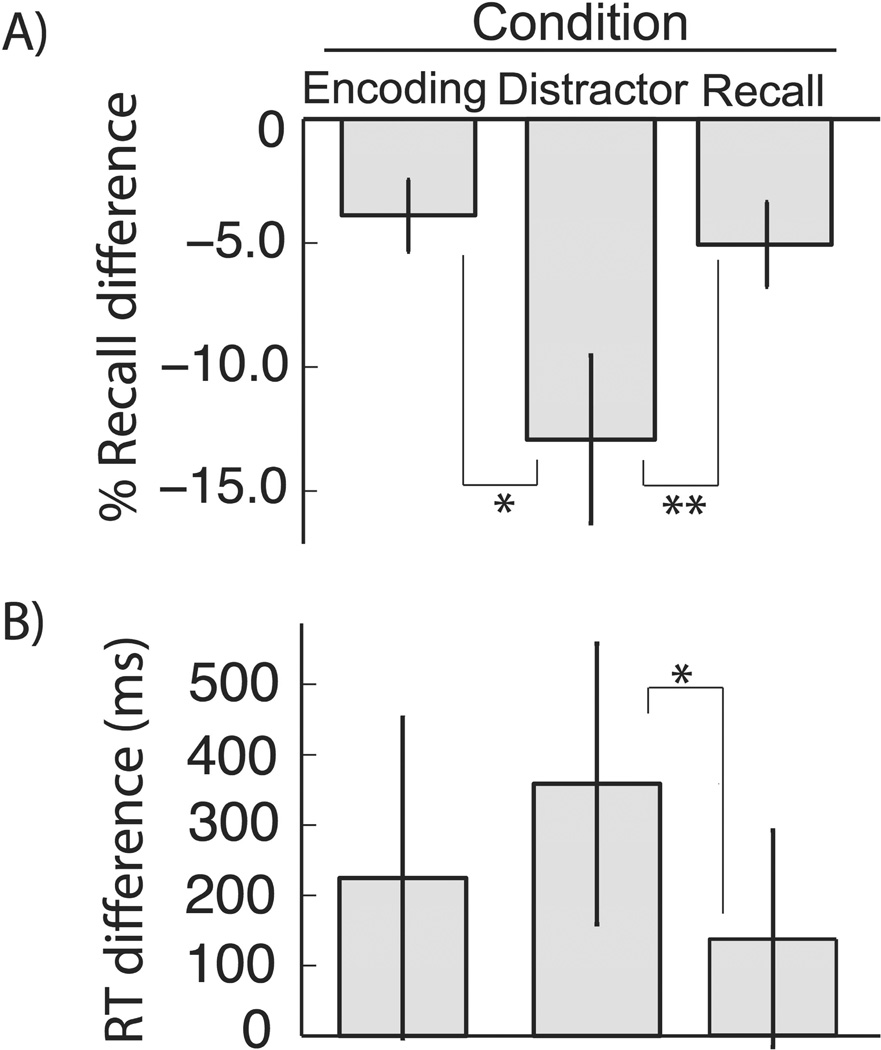Figure 2.
A. Probability of recall across stimulation conditions. Across-electrode mean and ± 1SEM of normalized probability of recall for each stimulation condition. Stimulation condition modulated probability of recall (MSE = 0.019, F2,23 = 5.97,p = 0.013) and stimulation during distractor led to worse recall than stimulation during encoding (t7 = 2.53, p = 0.039) and retrieval (t7 = 3.78, p = 0.007). We did not find a difference in probability of recall during encoding and retrieval periods (t7 = 0.79, p = 0.789). B. Response time across stimulation conditions. Across electrode mean and ± 1SEM of normalized response times for each stimulation condition. There was a strong trend towards stimulation condition modulating response time (MSE = 99.1 × 103F2,23 = 3.31, p = 0.067). Stimulation during the arithmetic distractor led to slower recall than stimulation during retrieval (t7 = 2.81, p = 0.026), and a comparison between distractor-period stimulation and encoding stimulation trended in the same direction (t7 = 1.85, p = 0.106). We did not identify a difference between response times during encoding or distraction conditions (t7 = 0.83, p = 0.440). In both panels, single and double asterisks mark significance, respectively p < 0.05 and p < 0.01.

